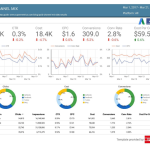New Google OS Designed For Embedded Systems Being Tested On Pixelbook
New Google OS Designed For Embedded Systems Being Tested On Pixelbook
by
Laurie Sullivan , Staff Writer @lauriesullivan, (January 03, 2018)
Google’s experimental operating system Fuchsia can now run on Pixelbook, but if the OS was built for embedded systems, automotive and wearables, why would the company allow developers to download and test it on laptops running Google Assistant?
![]()
Some reports suggest the OS was built for embedded systems, automotive and wearables.
With few
details revealed from Google on the OS — except for this documentation — it’s difficult to determine the exact nature of this operating system, but thanks to open-source technology it just takes a little digging and some bright minds to uncover missing pieces of the story.
Some wonder whether Fuchsia could replace Chrome and Android. While Android is for smartphones and tablets, Chrome OS for laptops and PCs, Fuchsia would be used in vehicles, white goods and wearables,
suggests one media outlet.
But if developers are free to test the OS on Google Pixelbook, then the company must have plans to expand it further than embedded systems like wearables and automobiles.
Google has been working on Fuchsia — an open-source OS in which developers can freely contribute code — for about a year. It was created on a Google-built Zircon microkernel, meaning that Google built a new kernel to create this operating system. Chrome and Android have been highly successful operating systems based on the Linux kernel.
If this OS has the ability to run across a variety of devices, it would be much easier for advertisers to track content and interactions, from search to display and video on desktops, mobile devices, and television — and for automobiles and any inanimate object such as washers, refrigerators and coffeemakers. Any OS developed today also would take into consideration voice assistants and search.
In late December 2017, Google published quality rating guidelines for Google Assistant and voice-related searches. These are similar to the web search quality guidelines, but take into consideration serving search results without screens. The guide, Evaluation of Search Speech — Guidelines, helps to evaluate voice responses.
The speculation arose when
documentation related to Fuchisa recently surfaced to show developers how to run it on Google’s Pixelbook.
MediaPost.com: Search Marketing Daily
(43)











